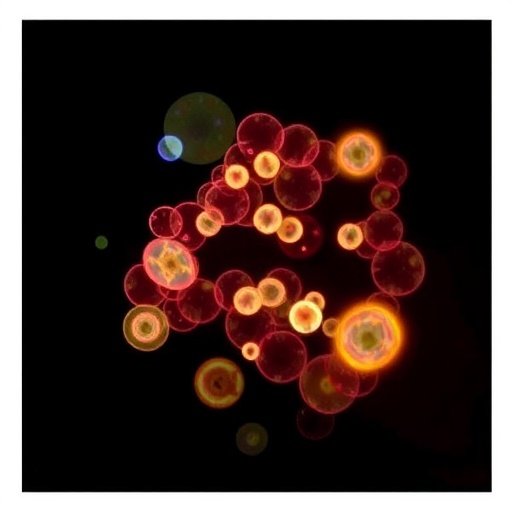In the evolving landscape of forensic science, researchers continuously seek innovative methodologies to enhance the accuracy and reliability of criminal investigations. One particularly challenging area is the determination of drowning sites when bodies are recovered from aquatic environments. The ability to accurately infer the site of drowning can have profound implications for legal investigations, influencing both the direction of inquiries and the interpretation of evidence. A newly published pilot study introduces a compelling, simplified approach that harnesses optical microscopy to classify diatom species, a technique that could revolutionize forensic drowning site analysis.
Diatoms, microscopic algae with uniquely patterned silica cell walls, have long been recognized in forensic science as valuable bio-indicators of aquatic ecosystems. Because each body of water hosts a distinct assemblage of diatom species shaped by environmental factors such as salinity, temperature, and nutrient levels, examining the diatom profile found in a drowned individual can provide crucial clues about the drowning location. Historically, however, diatom analysis has been hindered by complex procedures, requiring specialized equipment and extensive expertise. The new method introduced in this study promises to significantly lower these barriers.
At the core of this innovative approach is the utilization of standard optical microscopy techniques to classify diatoms extracted from forensic samples. The research team, led by Ma, Chen, and Yu, created a streamlined protocol capable of capturing the intricacies of diatom morphology using accessible laboratory equipment. By focusing on optical rather than electron microscopy, the procedure becomes more feasible for routine application, potentially allowing forensic laboratories around the world to implement diatom analysis without prohibitive costs or technical demands.
This pilot study meticulously collected unknown samples and subjected them to optical microscopy imaging, employing high-resolution magnification to reveal the exquisite exterior patterns characteristic of diverse diatom taxa. The researchers developed a classification framework that leverages these distinct morphological signatures, thereby enabling differentiation among species and types. Notably, the approach balances thoroughness with simplicity, ensuring that the process remains manageable while retaining scientific robustness.
The significance of this methodological shift extends beyond mere accessibility. Optical microscopy-based classification preserves the delicate structural details that serve as reliable identifiers, making it possible to map the diatom community composition present in samples from various suspected drowning locations. By comparing the diatom assemblage from the sample with reference profiles derived from surrounding water bodies, investigators can more confidently pinpoint or exclude potential sites associated with the drowning incident.
In forensic terms, the ability to validate drowning sites has critical ramifications. Determining whether a drowning occurred in one location or another could impact criminal proceedings, insurance claims, and broader judicial outcomes. Conventional methods involving diatom analysis were rarely used due to their complexity and time consumption, but this new study signals a promising paradigm shift. For the first time, forensic teams with limited resources might have a straightforward tool to add to their investigative arsenal.
Furthermore, the study’s pilot nature opens avenues for extensive future research and refinement. While initial results demonstrate the method’s feasibility and efficacy, scaling up to a broader array of aquatic environments and diatom species will be necessary to establish comprehensive databases and enhance classification algorithms. Such efforts would further boost forensic certainty and reduce ambiguities that sometimes arise from environmental variability and sample contamination.
Intriguingly, the researchers also discussed the potential integration of this optical microscopy classification with emerging computational methods, such as machine learning. Automated image recognition, combined with the nuanced morphological data captured by optical microscopes, could expedite the analysis process and reduce human error. This convergence of traditional microscopy with modern data science exemplifies the interdisciplinary innovation driving forensic advancements today.
The ecological implications of the research are equally compelling. Since diatom assemblages directly reflect environmental conditions, the approach could indirectly aid ecological monitoring and conservation efforts by expanding the understanding of diatom biodiversity in various freshwater and marine systems. This dual utility enhances the overall value of the technique, linking legal medicine with environmental science.
Critics might question the reliability of optical microscopy alone, suggesting that higher resolution instruments like scanning electron microscopy remain indispensable for certain diagnostic features. However, the study addresses these concerns by demonstrating the adequacy of optical methods for distinguishing major diatom taxa relevant to forensic contexts. This pragmatic balance between ideal resolution and practicality reflects thoughtful methodological design geared toward real-world applications.
Moreover, the study underscores the critical role of methodological standardization. By proposing a replicable protocol, the authors lay the groundwork for uniform practices in forensic diatom analysis worldwide. Such standardization is crucial for ensuring that results obtained in diverse laboratories are comparable and legally defensible, a necessity in contexts where evidence integrity is paramount.
In conclusion, this pioneering pilot study by Ma, Chen, Yu, and colleagues introduces an elegant yet powerful approach that harnesses the capabilities of optical microscopy for diatom classification in forensic drowning investigations. The simplicity and accessibility of the method may usher in a new era in forensic science, wherein accurate drowning site inference becomes a routine and reliable component of investigation protocols. As further research validates and augments this technique, its impact is likely to ripple across forensic medicine, legal investigations, and environmental sciences alike, exemplifying innovation that serves justice and science hand in hand.
Subject of Research: Forensic identification of drowning sites through diatom classification using optical microscopy.
Article Title: A simple optical microscopy-based diatom classification approach for forensic drowning site inference: a pilot study.
Article References:
Ma, A., Chen, M., Yu, Q. et al. A simple optical microscopy-based diatom classification approach for forensic drowning site inference: a pilot study. Int J Legal Med (2025). https://doi.org/10.1007/s00414-025-03520-3
Image Credits: AI Generated
DOI: 10.1007/s00414-025-03520-3
Keywords: Diatom classification, forensic drowning site inference, optical microscopy, forensic science, aquatic ecosystems, forensic biology, pilot study




